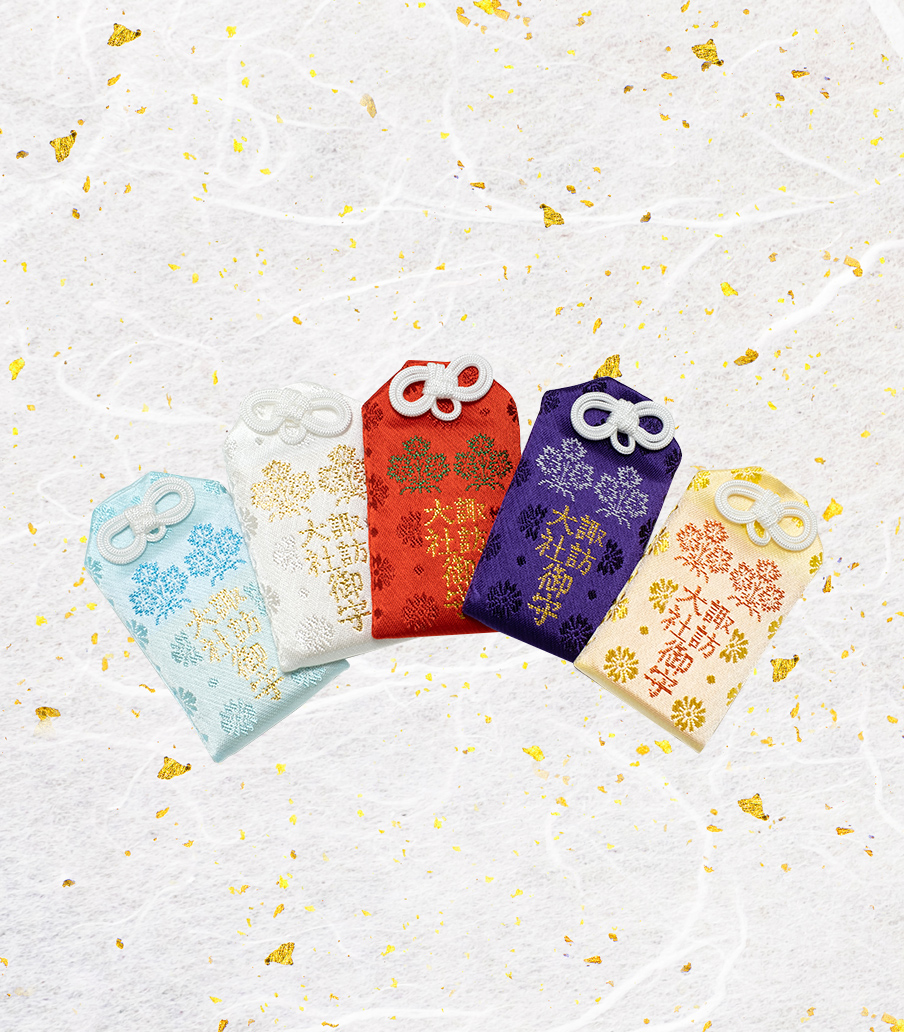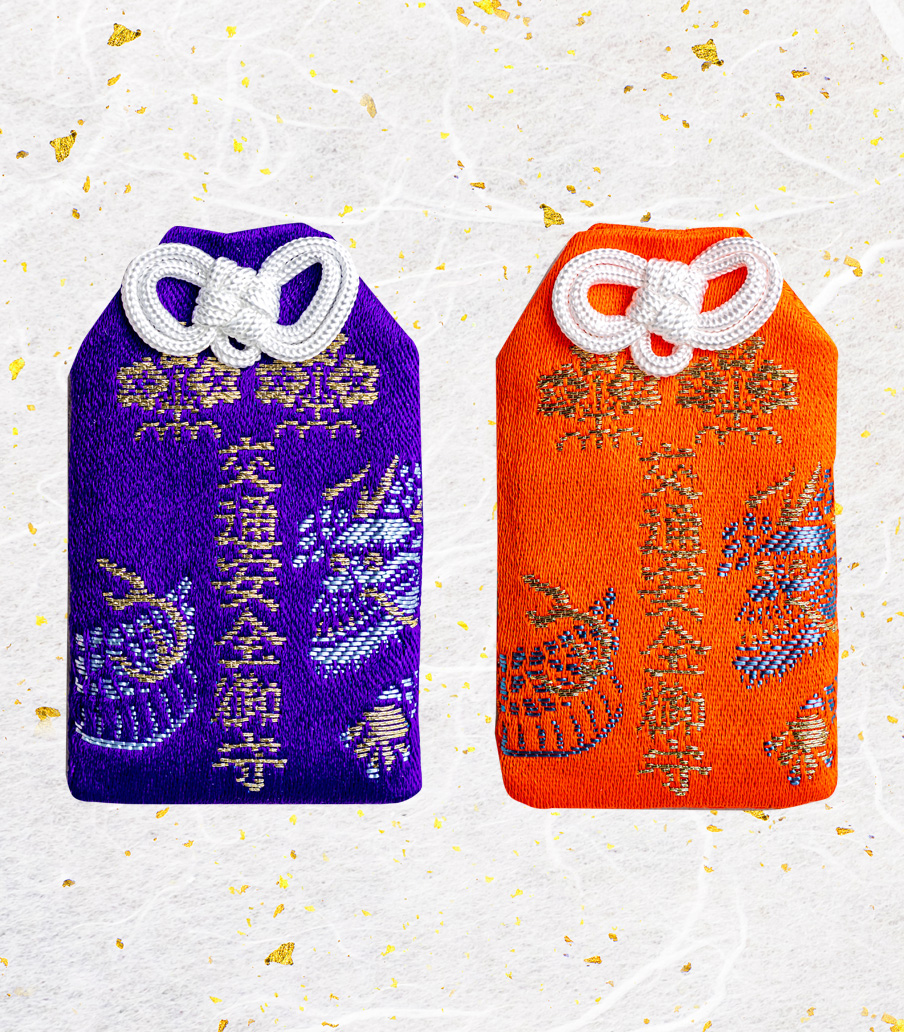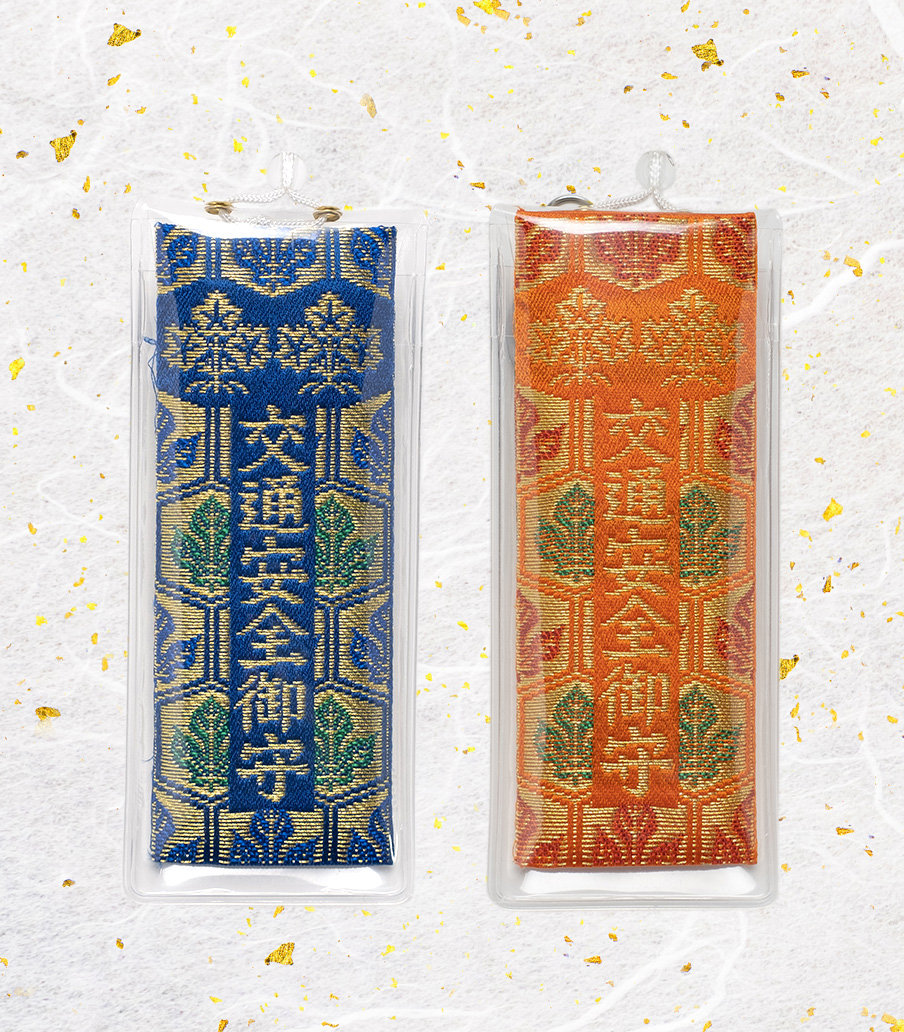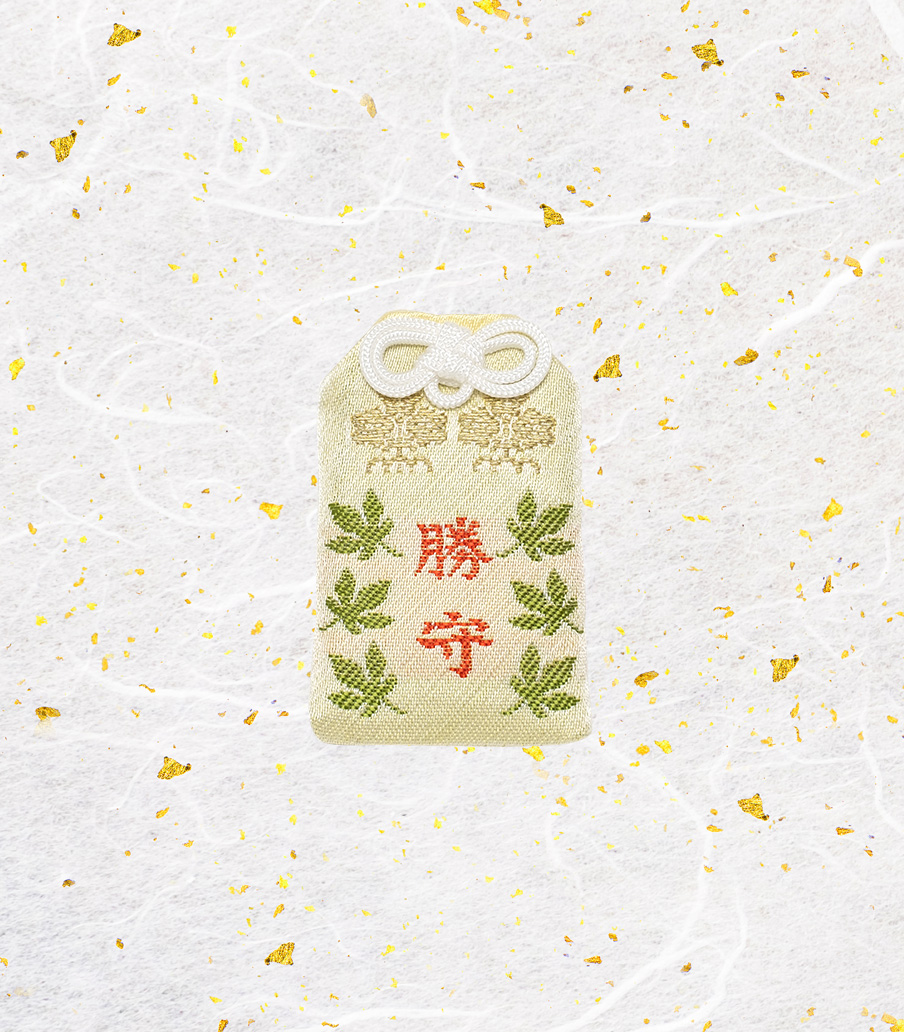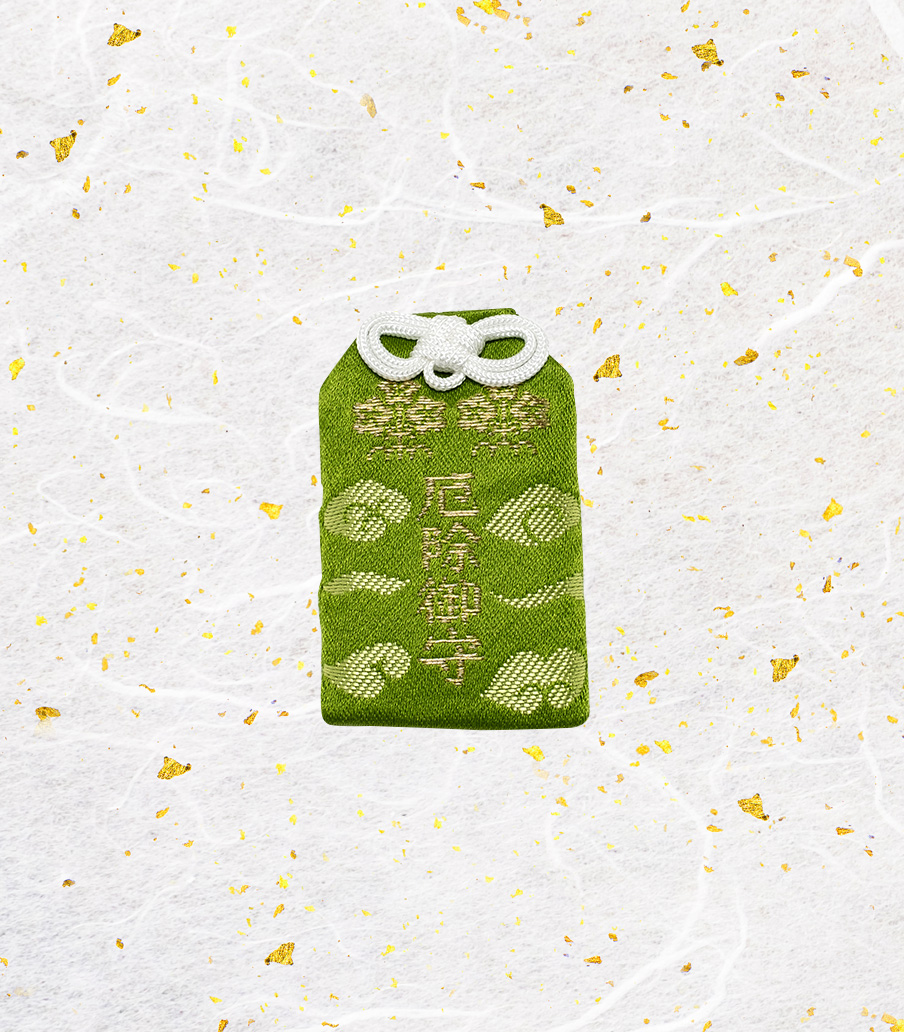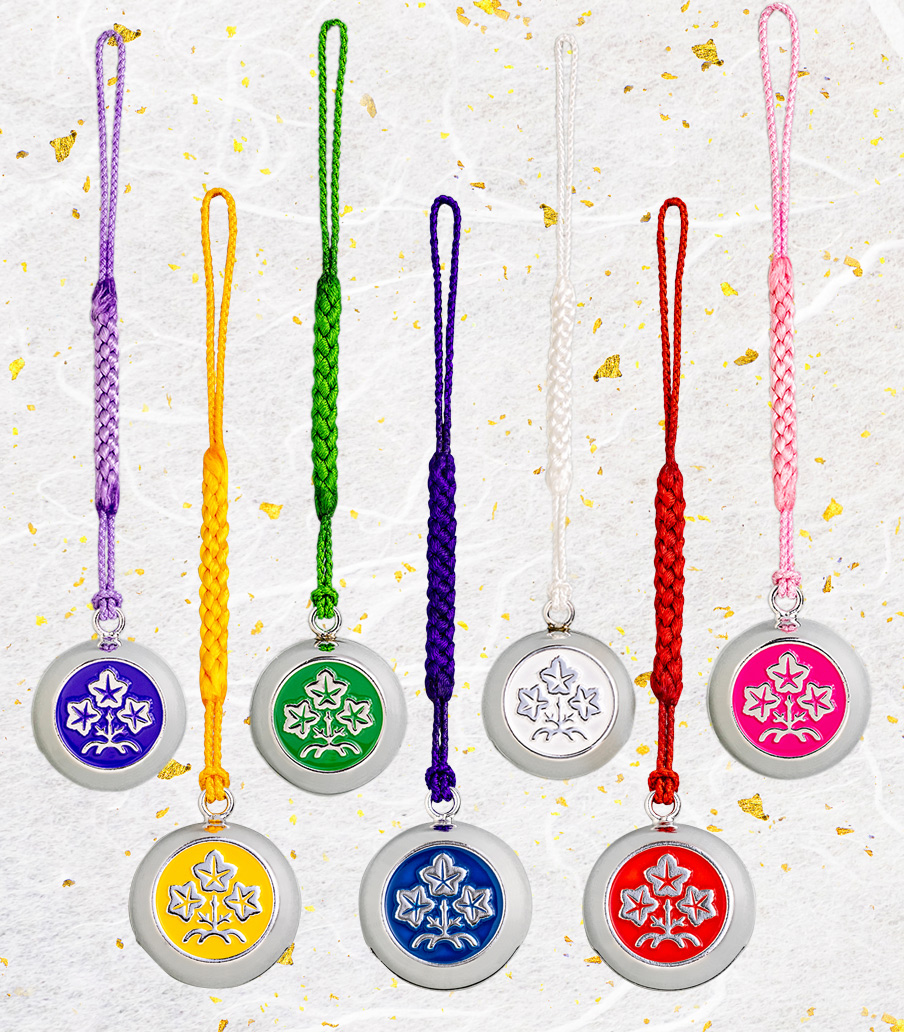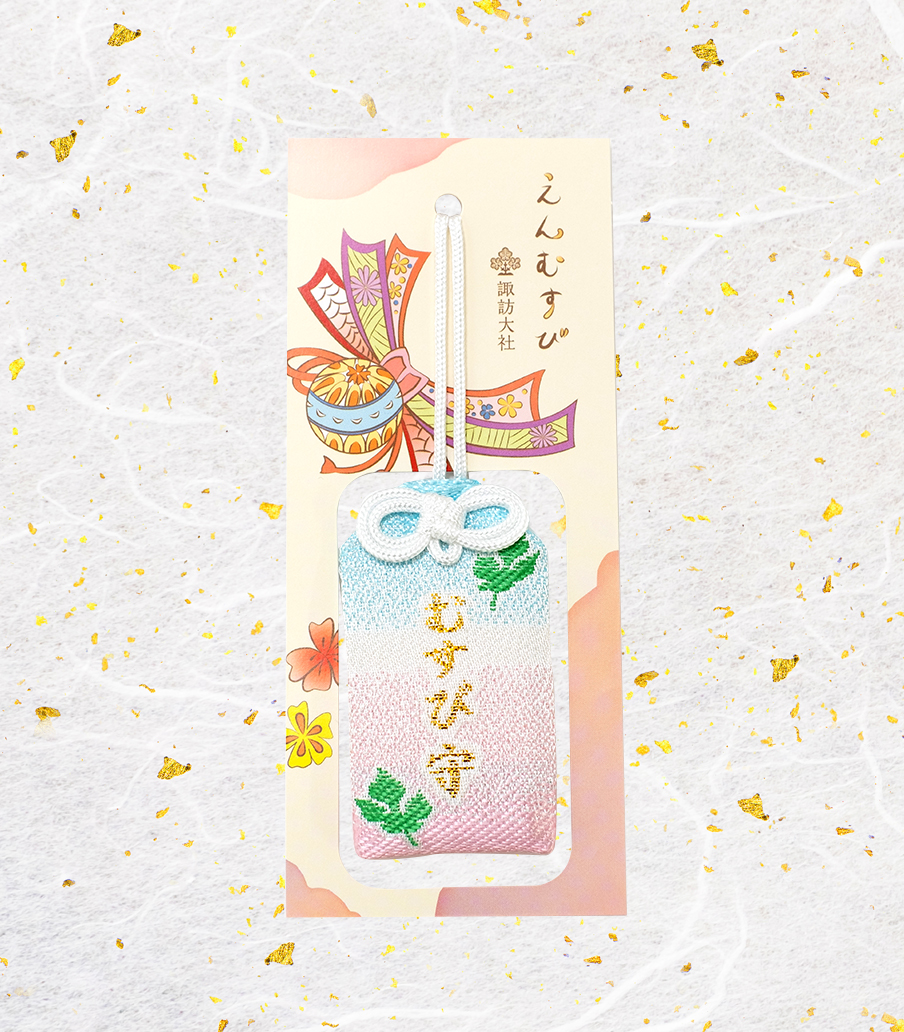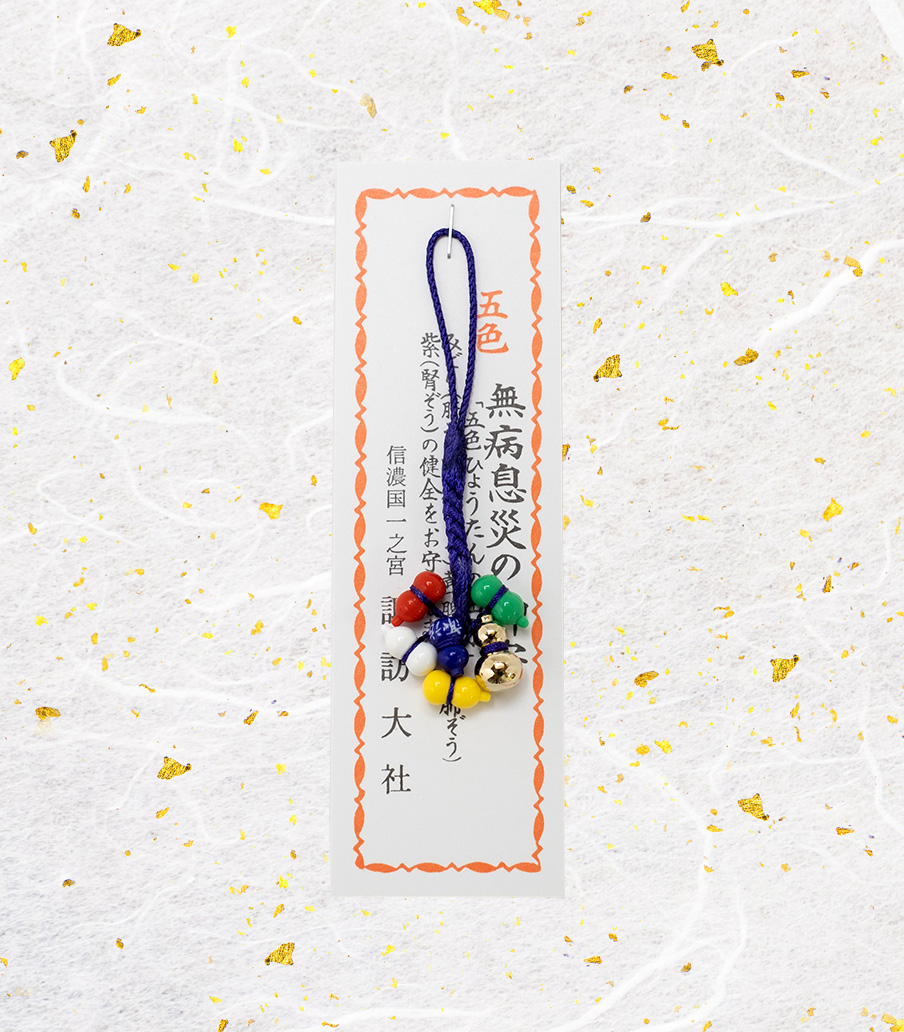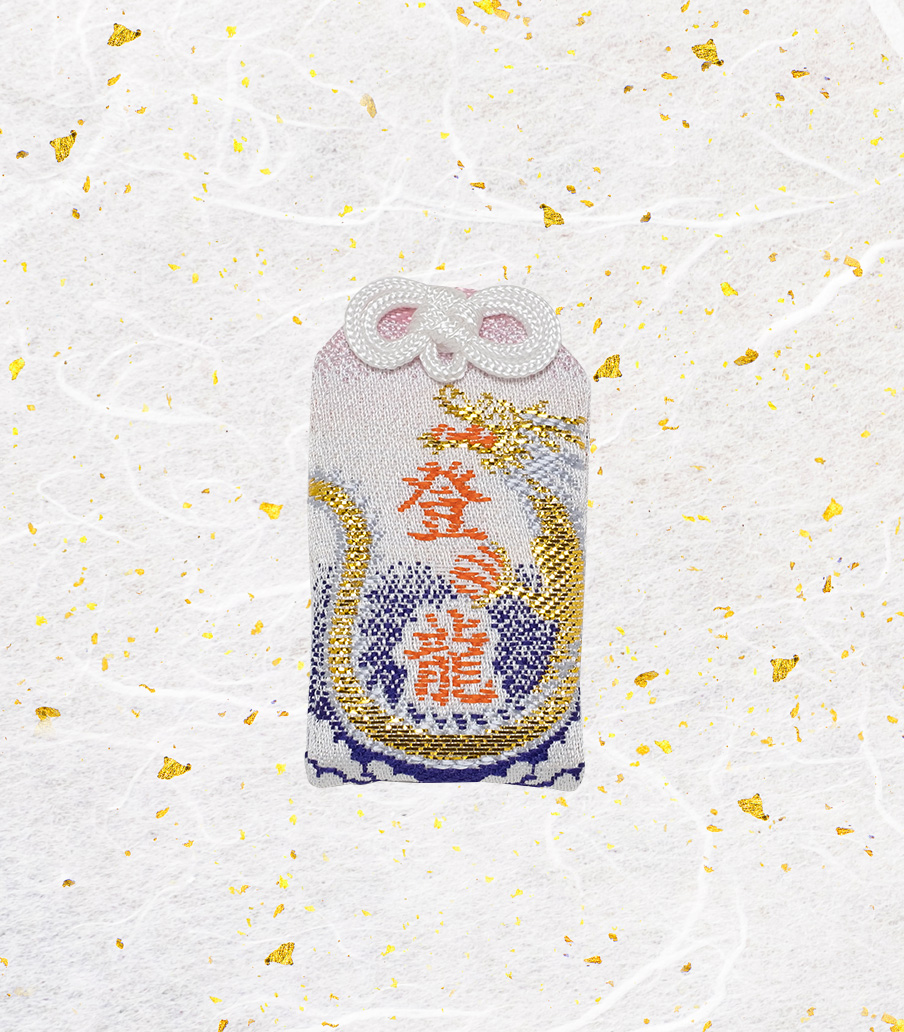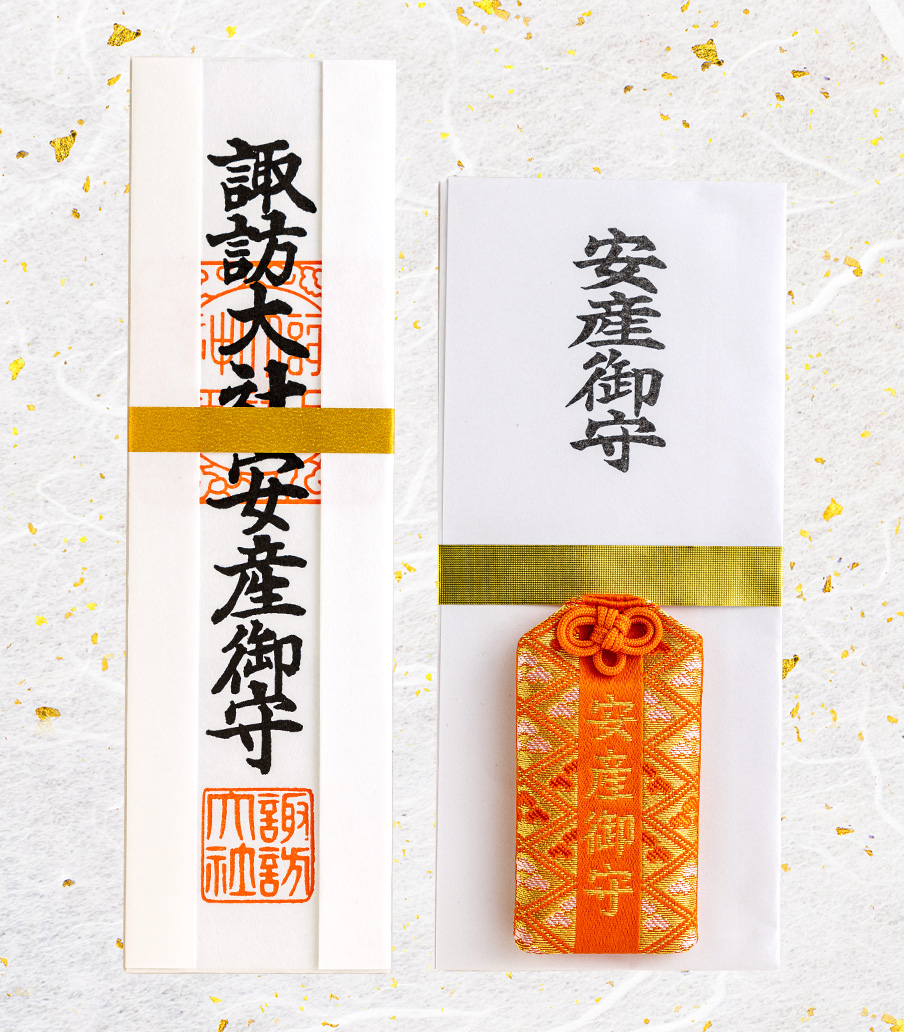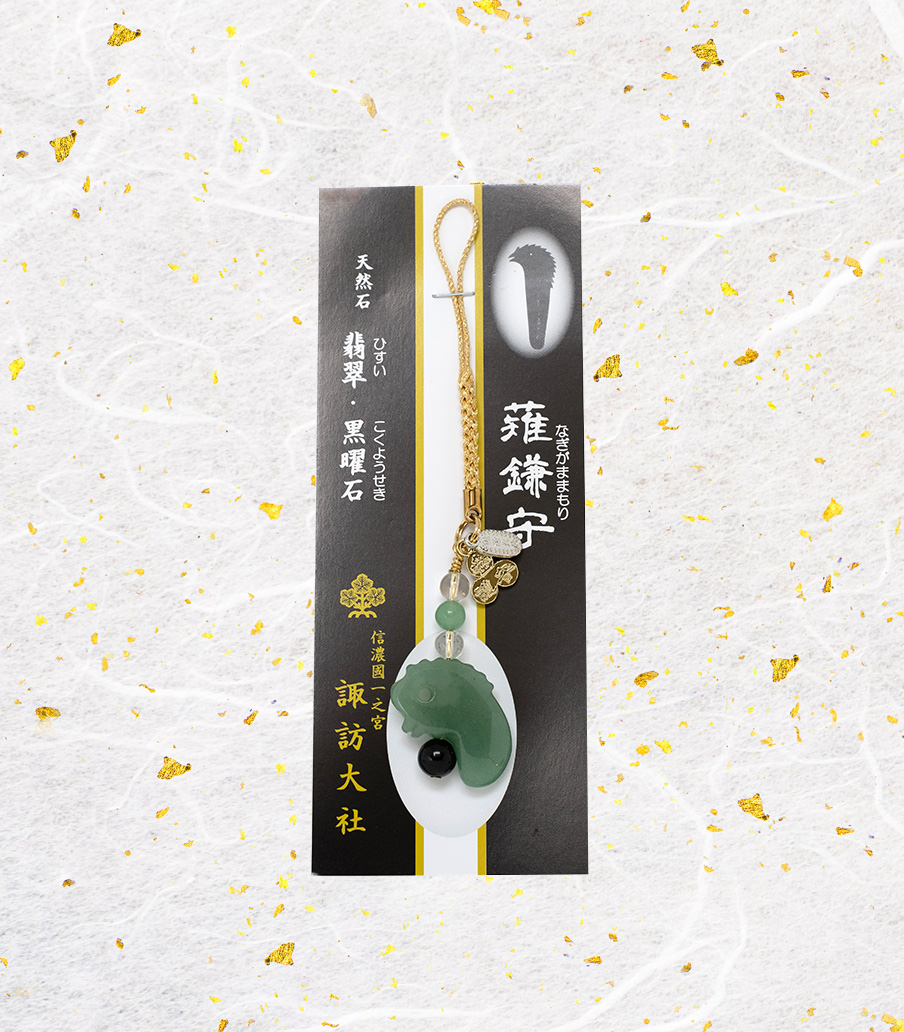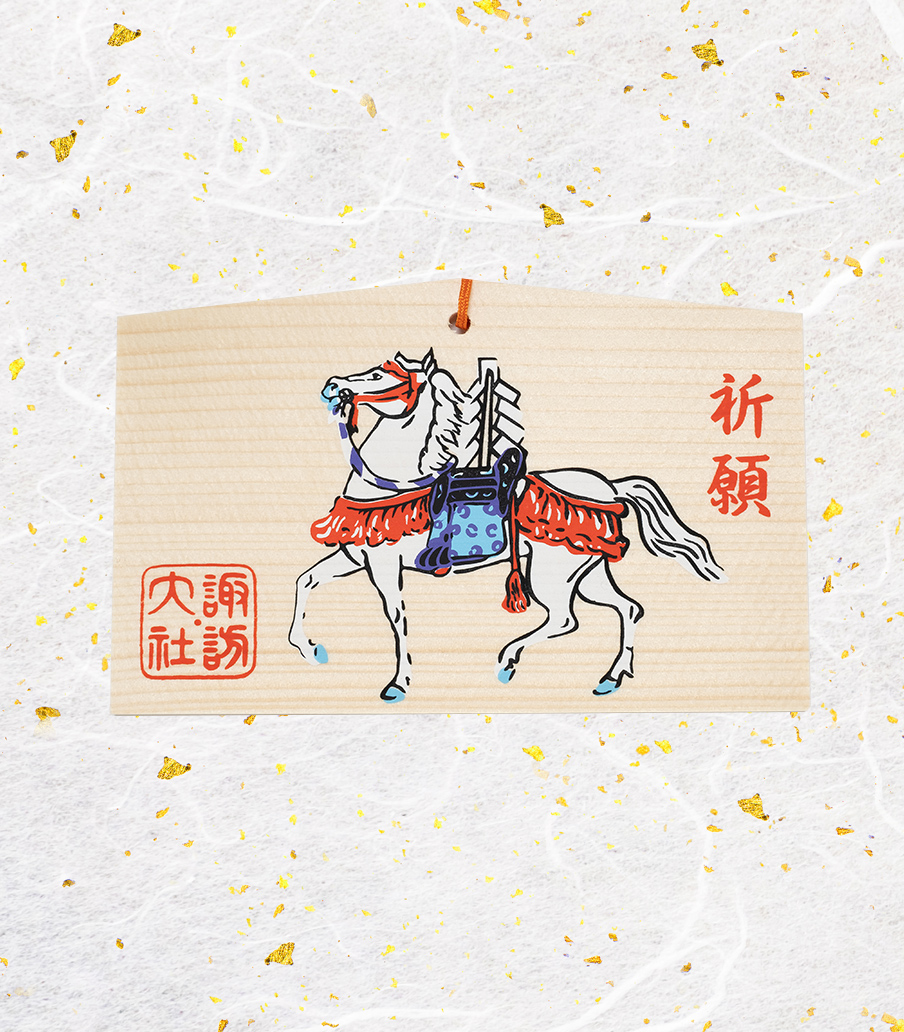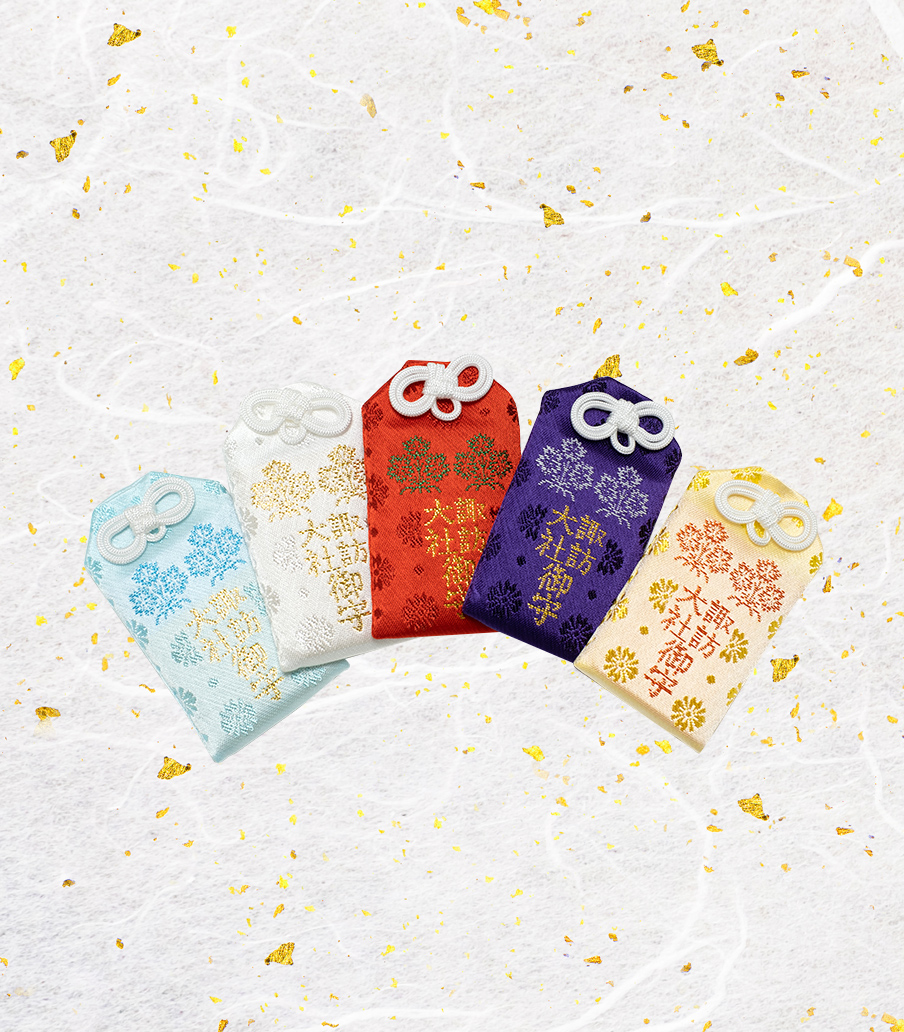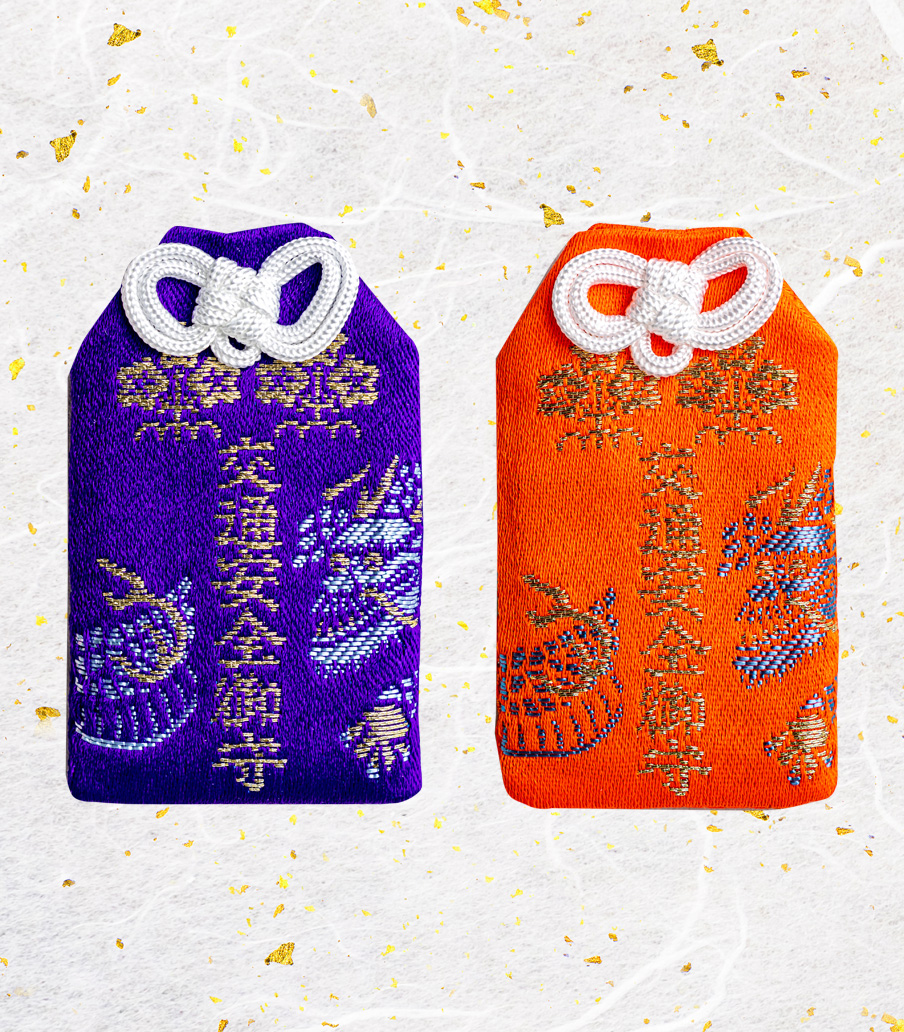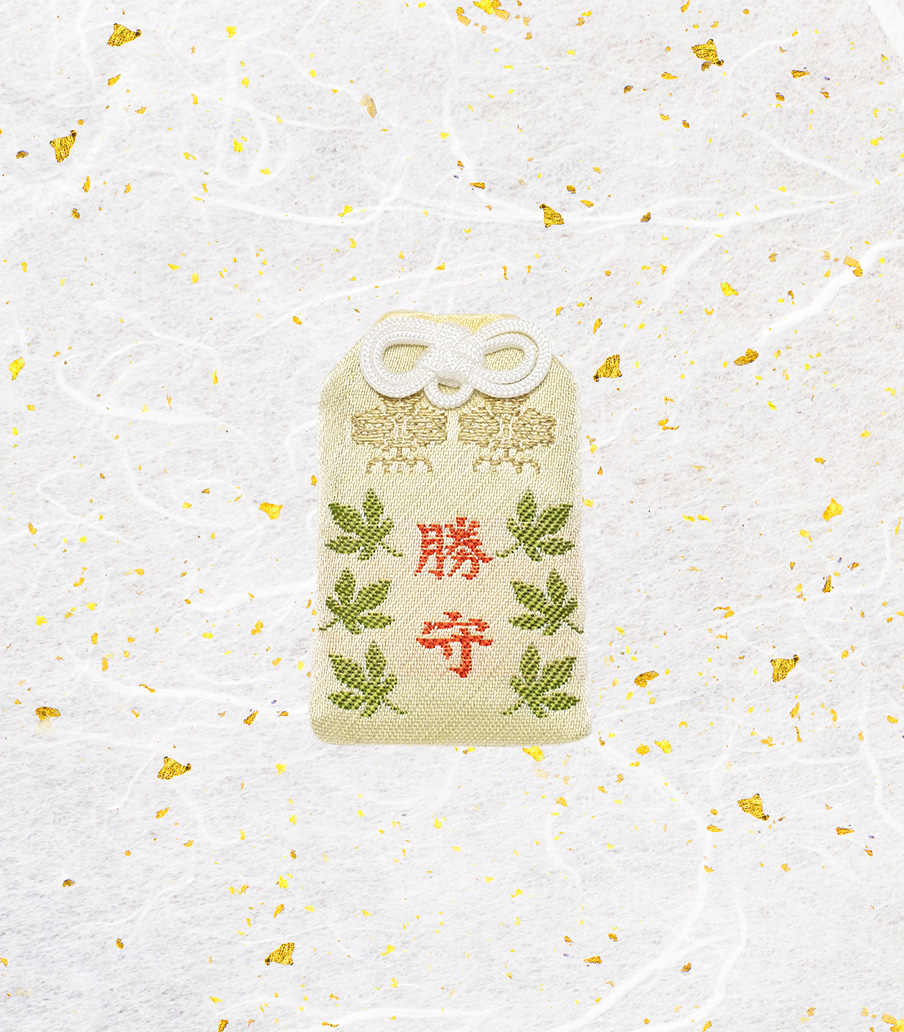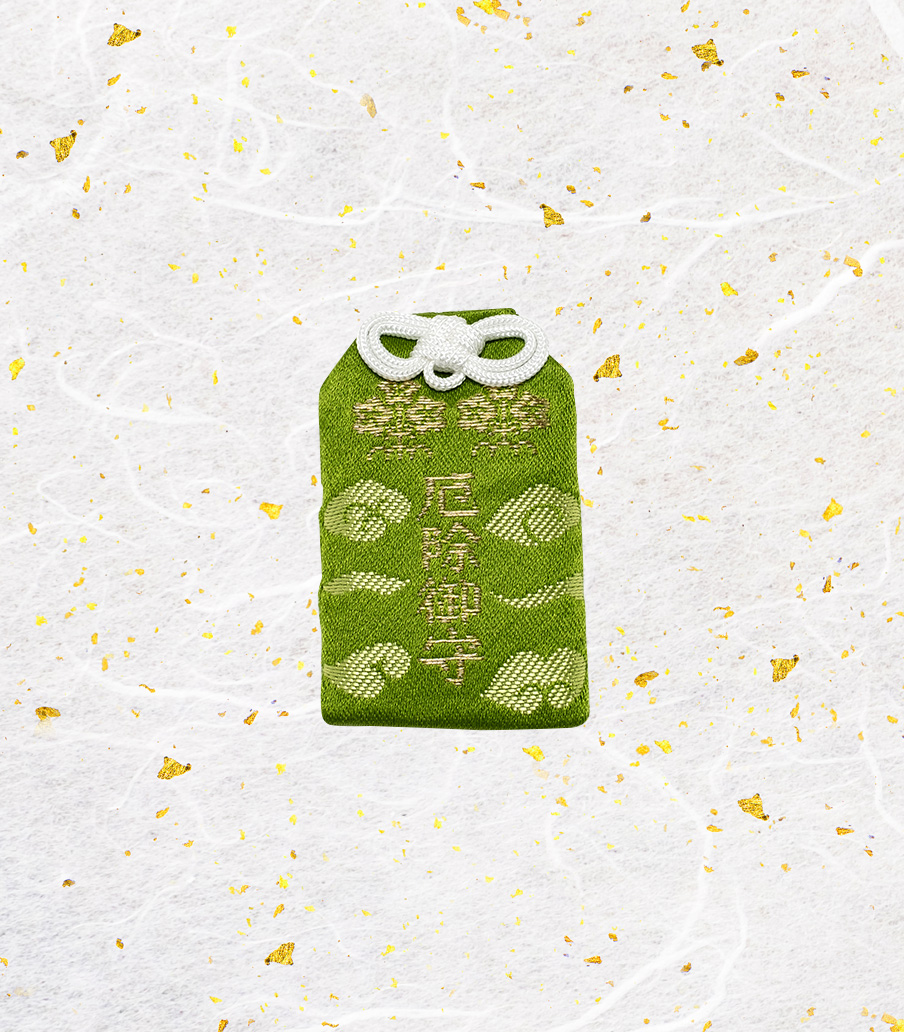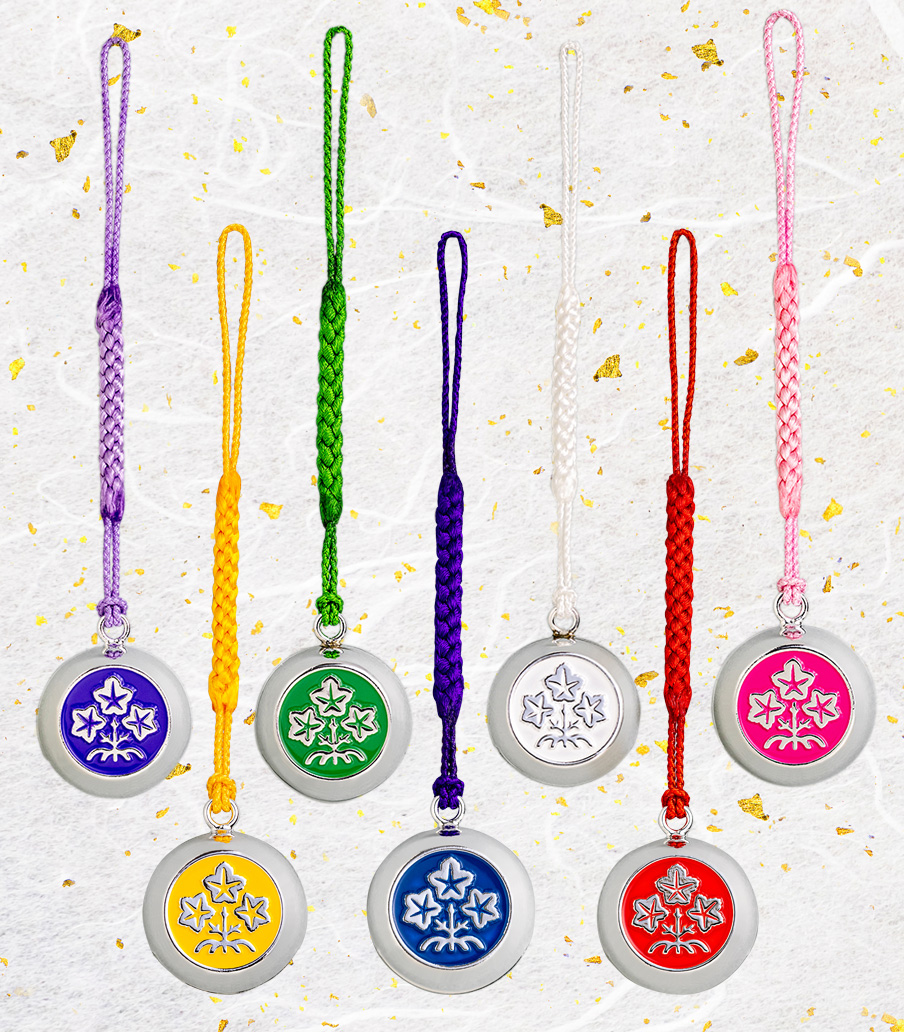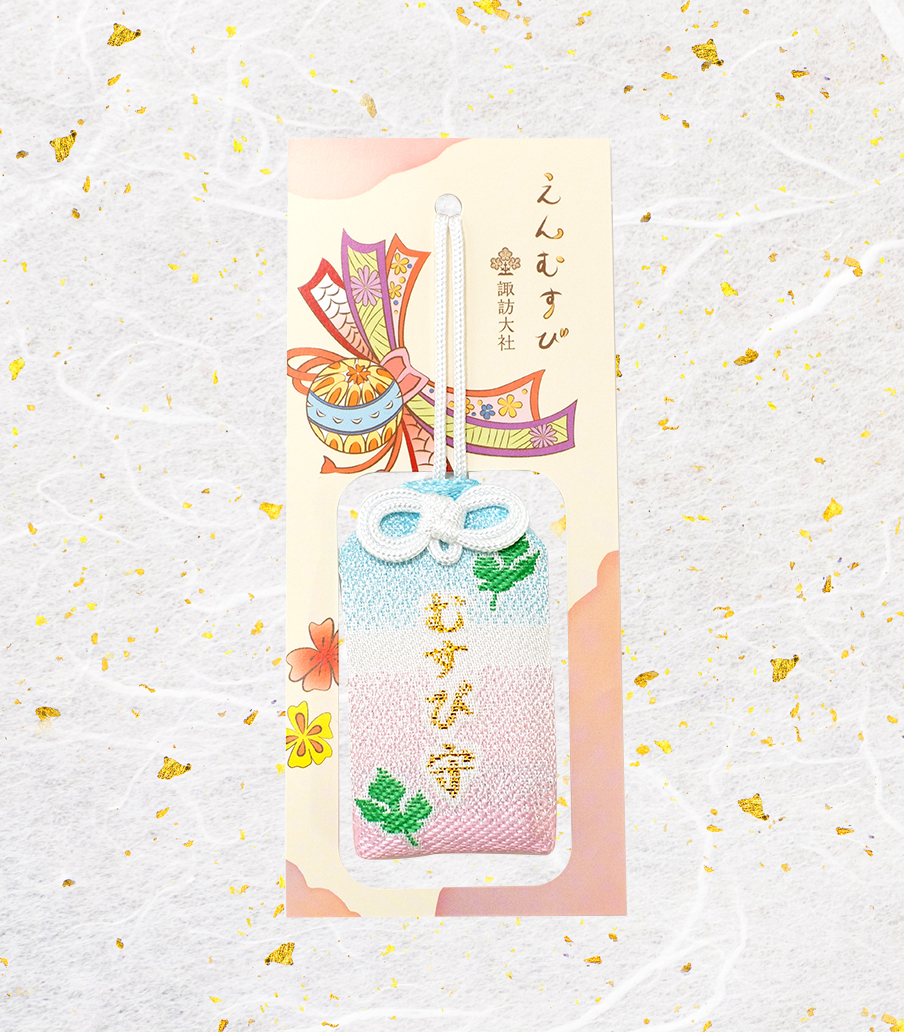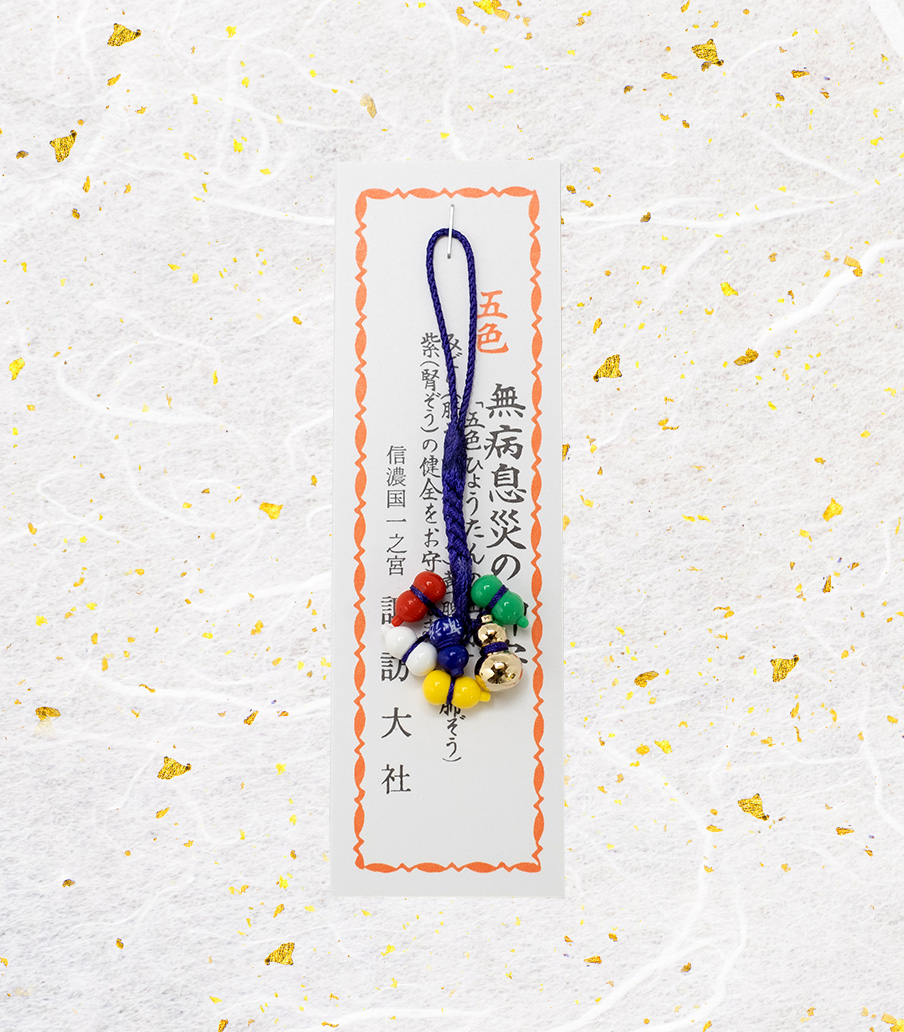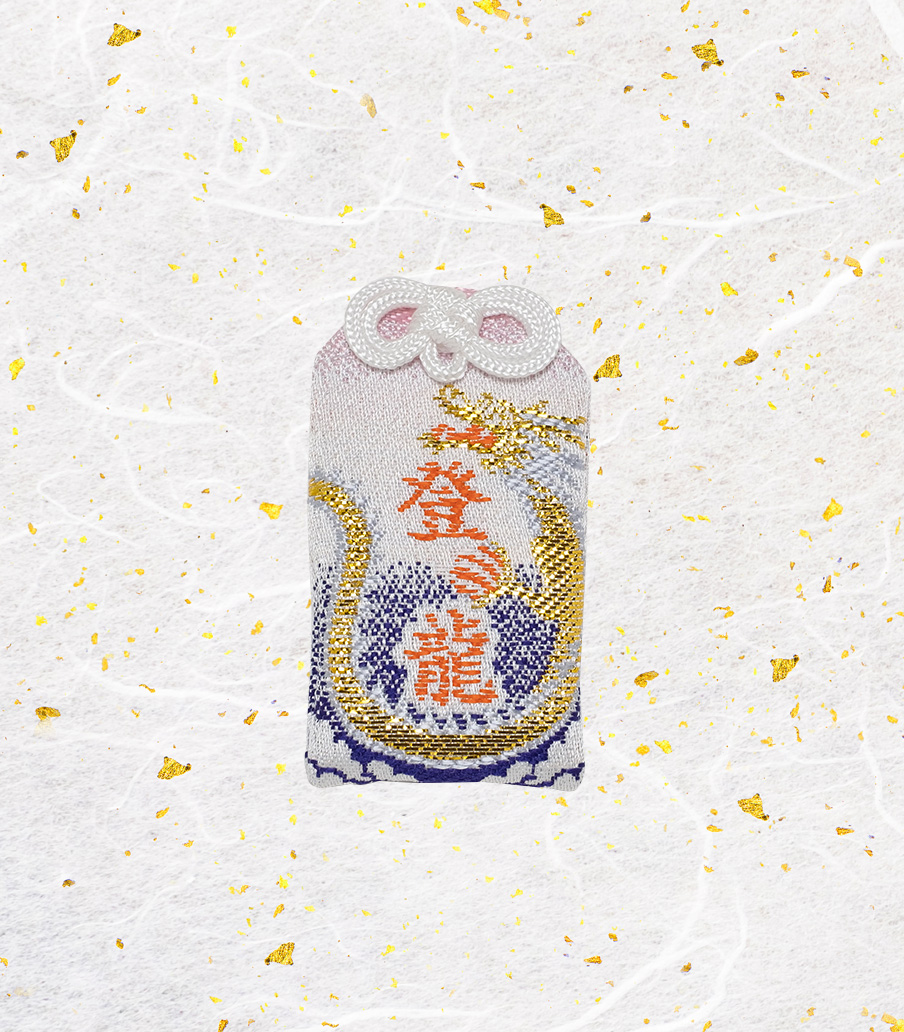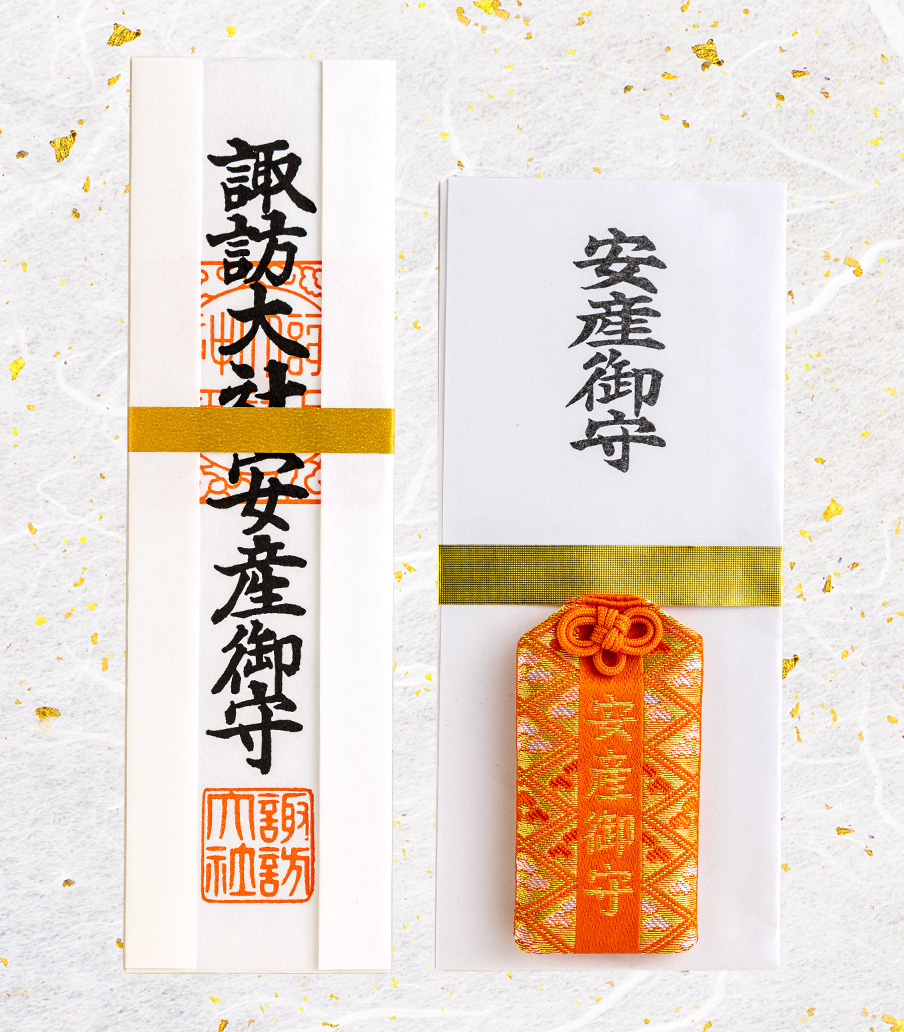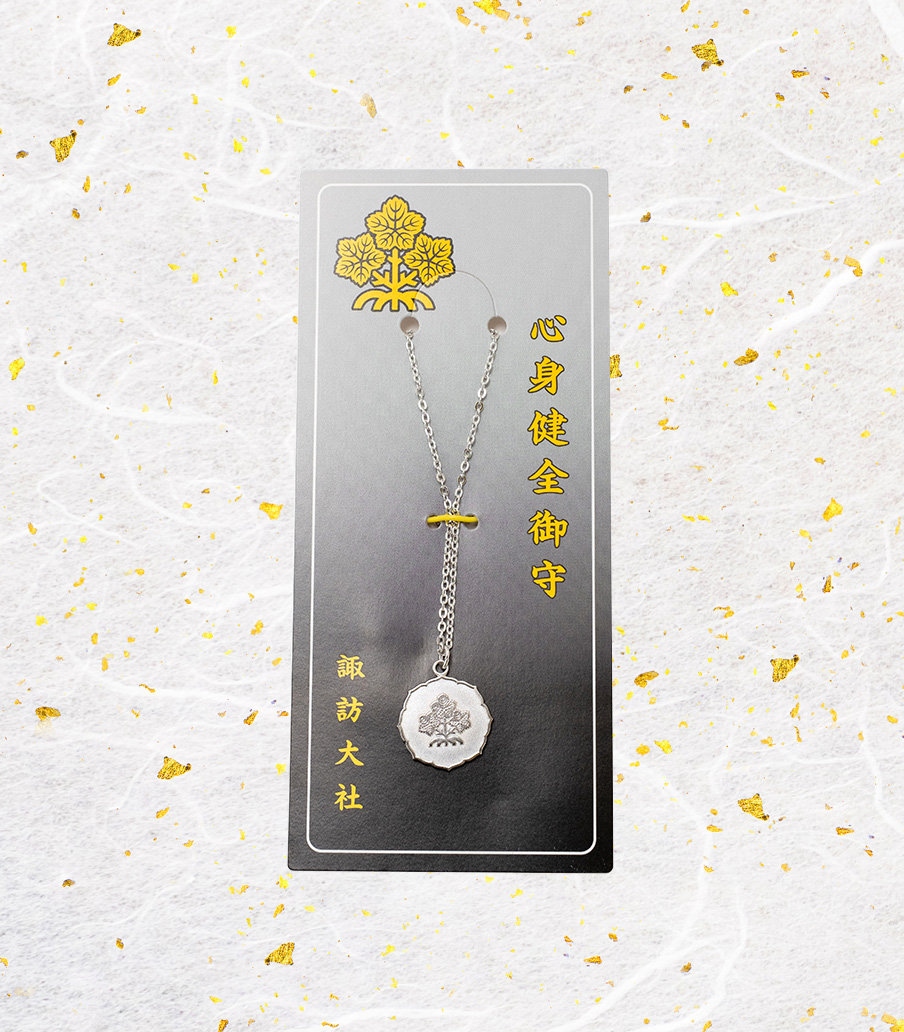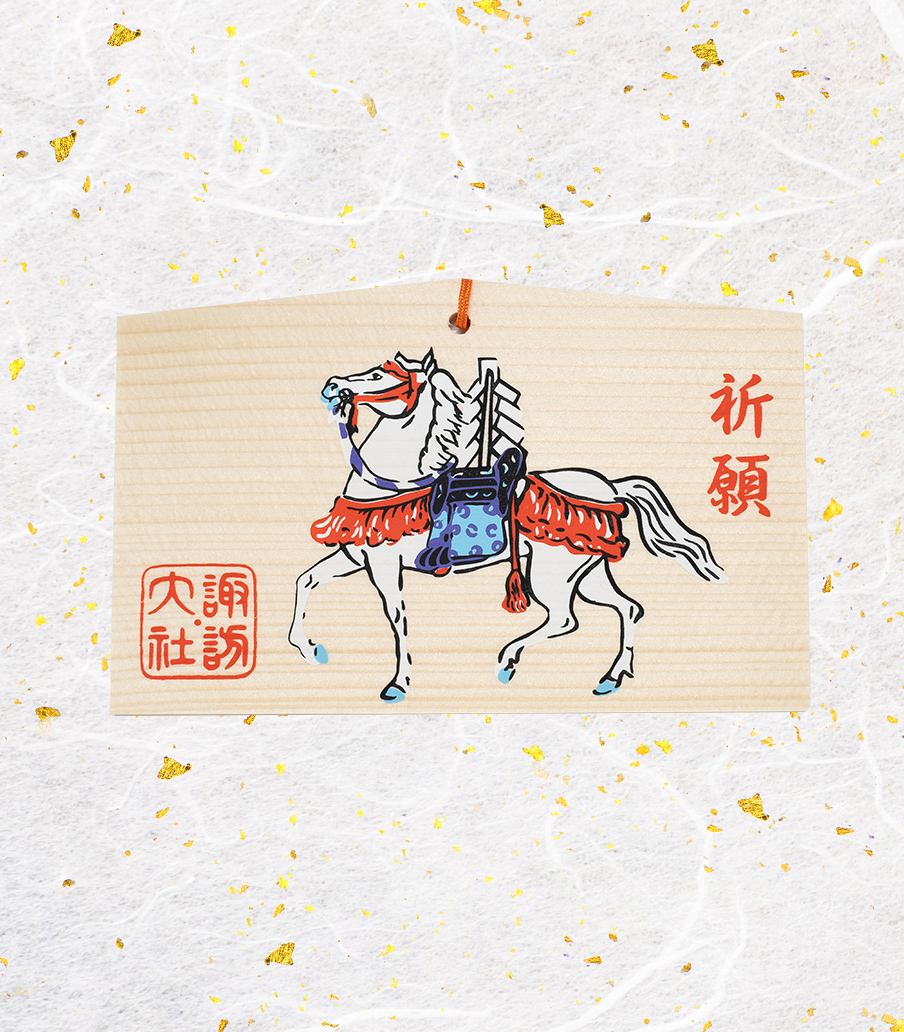Location
located to the north and south of Lake Suwa respectively.
Both locations are formed of two shrines. Kamisha is formed of
Honmiya and Maemiya, and Shimosha is formed
of Harumiya and Akimiya. Its parish area is as broad as to cover
the whole Suwa area (composed of three cities, two towns and one village).
The Four Shrines
The Nature Suwa beliefs
and today there are more than 10,000 Suwa branch shrines throughout Japan.
The god has a great variety of characteristics,
but among the oldest aspects of the god's nature are those of a dragon-like deity
who controls rain and wind and an agricultural deity who protects crops from
the ravages of these elements. Perhaps inspired by these water-relzted beliefs, the god also became popular
as a protector of sailors and people who work near the ocean,
and a Suwa branch shrine can be found in almost all port cities.
In the Kamakura period (1185-1333), when warrior government and culture was in its ascendancy in Japan,
the Suwa kami also became famous as a god of war and protector of warriors.
At this time hunting was an important part of military training,
yet this practice was increasingly discouraged as Buddhism,
with its teachings against taking life, spread through Japanese society.
Nevertheless, the Suwa kami, famous also as a god of hunting, grew in popularity as a deity
that allowed hunting, and this aspect of the god's character became widely known
through the inclusion of Suwa stories in the theatrical repertories of Joruri and Kabuki.
The varied nature of the Suwa kami has attracted worshippers from every region.
Their numbers have only increased over time,
revealing the strong faith held in the Suwa deity by the people of Japan.
Enshrined Deities
Kamisha
Takeminakata-no-kami
Shimosha
Yasakatome-no-kami and Takeminakata-no-kami
At the Shimosha both Takeminakata and his wife the goddess Yasakatome are worshipped,
but in general it is believed that Takeminakata resides at the Kamisha and Yasakatome at the Shimosha.
Divine Virtue
In 691, a messenger was sent by the emperor in order to for pray of nation peace and good harvest.
The successive emperors worshipped this shrine.
The Kami (deity) of Suwa is also worshipped as a deity of bravery and as a guardian of warriors.
When the Emperor Jingu sent troops to Korean peninsula,
the deity was believed to be assisting the troops,
and in Heian period the deity was well known as the primary divinity of war.
From Kamakura period, many famous war lords including Shoguns of Tokugawa family prayed
for fortune and peace of the nation by dedicating shrine lands and treasures.
The deity is also widely known as a deity of rain and wind and as a guardian of water.
Also, people worship the Kami for good harvest.
Furthermore, people believe that the deity is the source of life and the guardian of living.
Thus, the divine virtue is full of variety such as home safety,
healthy living, traffic safety, prosperity of industry and good luck.


Shrine Emblem
The crests of the Kamisha and Shimosha each have three leaves, so they are sometimes called the "Three Mulberries" (Sanbon kaji). The two crests are distinguished by their lower portions: the Kamisha's crest has four "roots," while the Shimosha's has five.
The Four Shrines and Their Characteristics
The details of Suwa Taisha's origins are not known, but Suwa is counted among the oldest shrines in Japan. The name of Suwa appears in many ancient documents such as the Kojiki and the Engi shiki. In the Heian period (794-1185), Suwa was already considered the main shrine (Ichi-no-miya) of Shinano Province (the old name for Nagano Prefecture).




